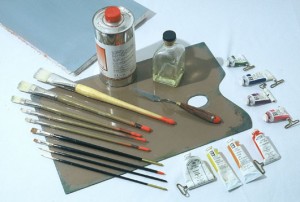Acrylic Painting Tips for Beginners

Acrylic paint is a fairly new medium compared to oil paint, only having been around in the 1950s. Since it’s a flexible medium, acrylic is continuously being experimented and explored in the art world. If you’re starting your hand at acrylic painting, here are some of the painting techniques that you can utilize:
Watercolor Effects
Watercolor effects is a technique where acrylic paint is diluted to reach the consistency of watercolor paint. Many artists use this technique, but unlike watercolor, acrylic washes can be layered on top of another without disturbing the colors underneath. To achieve this, you have to wait for the first pint to dry first before applying another paint color on top. Once dry, the acrylic paint becomes water-resistant.
One drawback of this technique is it’s difficult to modify the color once the paint is dry and sometimes, washes dry with unwanted hard edges. Two tricks to solve this problem: dampen the canvas or use another brush moistened with water. Apply the paint with one brush and soften its edges using the other moist brush.
Pouring and Dripping Technique
Master painter Jackson Pollock popularized this technique in the 1940s and 1950s. This technique doesn’t require the use of paintbrushes or palette knife. You use gravity to move a very fluid acrylic paint across the canvas. You can pour the paint directly on the canvas or you can dip a brush in the paint and let it drip down on the canvas. You can use this formula in creating a fluid paint for this technique: 50% acrylic paint, 20% clear water-soluble varnish, and 30% water.
Sgraffito Technique
Sgraffito comes from the Italian word graffiare which means to scratch. As the name suggests, this is a scratching technique. You scratch the top layer of the paint to reveal areas on the surface underneath. A thick layer of paint is applied onto the canvas and you can use a blunt tool like a screwdriver or an end of an old paintbrush to scratch into the top layer and reveal another color underneath or the white surface of the canvas.
Using a Squeegee
You can use any regular squeegee from any hardware store for this technique. To do this, put some paint blobs on your canvas, you can lay out several colors. Using the squeegee, swipe it across the surface, dragging the paint across the canvas, mixing and smearing all the paints as you go.
Acrylic painting is a good starting point for beginners. It offers versatility and flexibility to an artist.
Image source: www.dailypainters.com












